Defence spending as a catalyst for R&D, innovation, and economic growth in Canada
The Canadian government has committed to increasing defence spending, reaching NATO’s 2% GDP target ahead of schedule by 2025–2026, with spending projected to rise to 5% by 2035. Given the research-intensive nature of the defence sector and its heavy reliance on new technologies and scientific innovation, this marks a historic shift in Canada’s defence framework and opens up new opportunities for strategic investments in research and development (R&D). Many technologies in everyday public use today were originally developed through defence-related funding, highlighting the sector’s broader impact on technological advancement.
The CSPC invites editorials on how this increase could be strategically aligned with investments in R&D, drawing from international examples where defence spending has driven innovation. How can this shift bolster Canada’s innovation ecosystem, strengthen our research capacity, and contribute to long-term economic growth? What policies and practices from other countries could Canada adopt to make the most of this historic opportunity for innovation and economic development?
We welcome analyses from researchers, policymakers, and industry experts on how to leverage defence funding to advance science, innovation, and national prosperity.
Deadline extended: September 26, 2025
Submission details below
Editorial Format & Requirements
- Word Count: Editorials should be 600–1000 words (some may range up to 1200 if needed).
- Original Work: Submissions must be the original work of the author(s) and should not have been published in any other media outlet.
- If any AI tools are used during preparation, please see below for more details.
- Submission Platform: Editorials must be submitted through the designated online form.
- Figures: You may include up to 3 high-quality figures to support your editorial. Submit figures as separate files (in addition to embedding them in the text) to ensure high-resolution publishing.
- Please provide artist credit where applicable.
- CSPC will not be accepting articles, which are promotional in nature (E.g., promoting a product, innovation, or service) or which include profanity of any form.
AI Usage Policy for CSPC Editorials
CSPC editorials must reflect the original thought and voice of the author(s). However, we recognize the evolving role of artificial intelligence (AI) tools in content creation, research, and productivity.
Authors may use AI tools (e.g., for idea generation, drafting assistance, editing, summarization, or image generation) to support their writing process. All final editorial content must be written, reviewed, verified, and approved by the author(s) to ensure accuracy, clarity, and integrity.
If AI tools are used in any part of the editorial process, authors must include an acknowledgment indicating the use of AI.
CSPC does not permit editorials to be entirely generated by AI without human authorship, accountability, and oversight. Our goal is to promote transparency while supporting responsible and ethical use of technology in science policy dialogue. We are looking forward to presenting and highlighting your thoughts and perspectives on various topics for readership by a Canada-wide audience.
Required:
- Article Title
- Main Topic of the Article
- Keywords (minimum of 3)
- Full Name, Title, and Institutional Affiliation for each author
- Province of the lead author
- Sector(s) represented (Select one or more from our predefined options)
- High-Resolution Headshot(s) of each author
- Format: .png or .jpeg
- Recent and professional in quality
- Completed Editorial Submission Guidelines Form
Optional:
- Preferred Pronouns for each author
- Social Media Handles (LinkedIn, Twitter/X, etc.) for promotional tagging
Notes on Submission
- Submissions are reviewed on a rolling basis.
- High-quality visuals and well-formatted content enhance the impact of your editorial.
- CSPC reserves the right to edit submissions for clarity, style, and space.
We thank you for your submission. Please add [email protected] to your contacts so that we can make sure any follow-up messages reach you.
If you have any questions about writing an editorial for CSPC, please do not hesitate to contact the Editorial Committee at [email protected].

